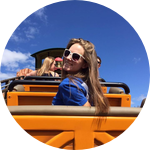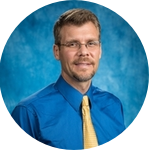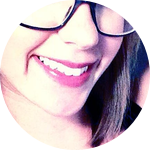About This Project
When humans land on the surface of Mars, they will need reliable and resilient technologies to achieve mission goals and survive. Most important is the ability to communicate with each other. To decrease the size, weight, and power over traditional radio-based communication, we are developing a laser-based system for to send data and voice. With your support, we will use resilience engineering principles to build a prototype system for testing during a future NASA underwater training mission.
Ask the Scientists
Join The DiscussionWhat is the context of this research?
As space exploration becomes more ambitious and innovative, it is necessary build flexibility into the vehicle and habitat components to mitigate accidents. Our team of students and faculty participated in a previous NASA underwater mission and learned many valuable lessons about how to design resilient systems for extreme environments.
Our scope for this project is to develop a laser-based communication system, allowing our students from multiple discipines (human factors, electrical engineering, physics, and aerospace engineering) to develop applied experience and furthering the capability of future long-duration space flights.
What is the significance of this project?
Laser-based communication systems have the potential to significantly improve operations in extreme environments, from underwater activities with Navy submarines and divers, to missions on the Moon and Mars. Such systems require less weight, size, and power and may have greater range than traditional radio-based communication. Our goal is to develop a prototype communication system for testing underwater during a future NASA Extreme Environment Mission Operations (NEEMO) mission. Our student team will work with an industry partner and technical experts at NASA to design, test, and redesign a communication system and then deploy the system during the mission, assisted by astronaut divers and remotely-operated underwater vehicles.
What are the goals of the project?
Our proposed research will not only be a key part of training future and current astronauts, but findings will support future development of communication systems for underwater and space applications. Our objectives is to set up two (2) optical arrays, conduct tests on range/strength of data link between two arrays at different distances to establish optimal and maximum distances, and develop procedures (standard operating and contingency) and compare a digital version (with embedded contingency plans) against a more traditional document. These objectives can add to the other "lessons learned" in an extreme enviroment, bringing us closer to higher-fidelity communications for future Mars missions.
Budget
We are primarily looking to support the students' work so that they can conduct ground-breaking research. The overall project will require students to design, test, and build a laser-based communication system to be used at an underwater research facility during a NASA Extreme Environment Mission Operations (NEEMO) mission, where astronauts conduct simulated space missions. Your support will allow students to purchase necessary equipment, conduct testing, and travel to Aquarius, the underwater facility that is used during NEEMO.
We are currently working with an industry partner and technical experts at NASA to develop our plan, however we need your support to increase our student involvement.
Endorsed by
Meet the Team
Team Bio
Our team is comprised of undergraduate and graduate students from Embry-Riddle Aeronautical University from the fields of engineering and human factors psychology. We are also partnering with Micro Aerospace Solutions, a small aerospace company located in Melbourne, FL.
Katlin Anglin
I am currently a doctoral student in the Human Factors program at Embry-Riddle Aeronautical University (ERAU). My research focuses on resilience engineering and team adaptation in extreme environments. I am particularly interested in the technological and human factors challenges of exploration space missions to destinations like Mars. This past year, I was the student lead for ERAU on a project for the NASA Extreme Environment Mission Operations (NEEMO) program. This experience made me grow as a person and gave me valuable skills I will use in my academic and professional career.
I hope to continue this endeavor as well as give others the opportunity to be involved in groundbreaking research.
Lab Notes
Nothing posted yet.
Project Backers
- 4Backers
- 3%Funded
- $205Total Donations
- $51.25Average Donation




